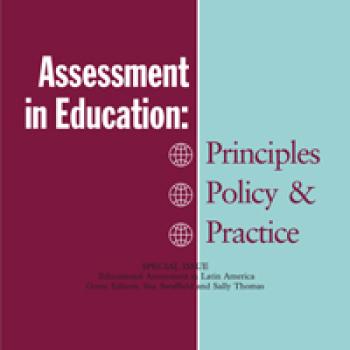
School composition is a topic that has gained increasing attention from researchers over the past few years, as it has been found that the socio-economic characteristics of students are associated with their achievement. However, most research has been cross-sectional and carried out in industrialised countries. In this study, we use parental education as a measure of classroom composition across schools in Peru, and find that there are high levels of segregation, especially at the extremes of the distribution. Using longitudinal data from the Young Lives Study, we find that classroom composition was positively associated with achievement in mathematics and sense of belonging of students, and not associated with reading achievement or perception of security at school. We discuss these results and suggest that school composition is a relevant variable to include in descriptions of national educational systems in Latin America and as a context variable for results of achievement among students.
Reference:
Santiago Cueto, Juan León & Alejandra Miranda (2016) Classroom composition and its association with students’ achievement and socioemotional characteristics in Peru, Assessment in Education: Principles, Policy & Practice, 23:1, 126-148, DOI: 10.1080/0969594X.2015.1105783
The full text is available online.

School composition is a topic that has gained increasing attention from researchers over the past few years, as it has been found that the socio-economic characteristics of students are associated with their achievement. However, most research has been cross-sectional and carried out in industrialised countries. In this study, we use parental education as a measure of classroom composition across schools in Peru, and find that there are high levels of segregation, especially at the extremes of the distribution. Using longitudinal data from the Young Lives Study, we find that classroom composition was positively associated with achievement in mathematics and sense of belonging of students, and not associated with reading achievement or perception of security at school. We discuss these results and suggest that school composition is a relevant variable to include in descriptions of national educational systems in Latin America and as a context variable for results of achievement among students.
Reference:
Santiago Cueto, Juan León & Alejandra Miranda (2016) Classroom composition and its association with students’ achievement and socioemotional characteristics in Peru, Assessment in Education: Principles, Policy & Practice, 23:1, 126-148, DOI: 10.1080/0969594X.2015.1105783
The full text is available online.

